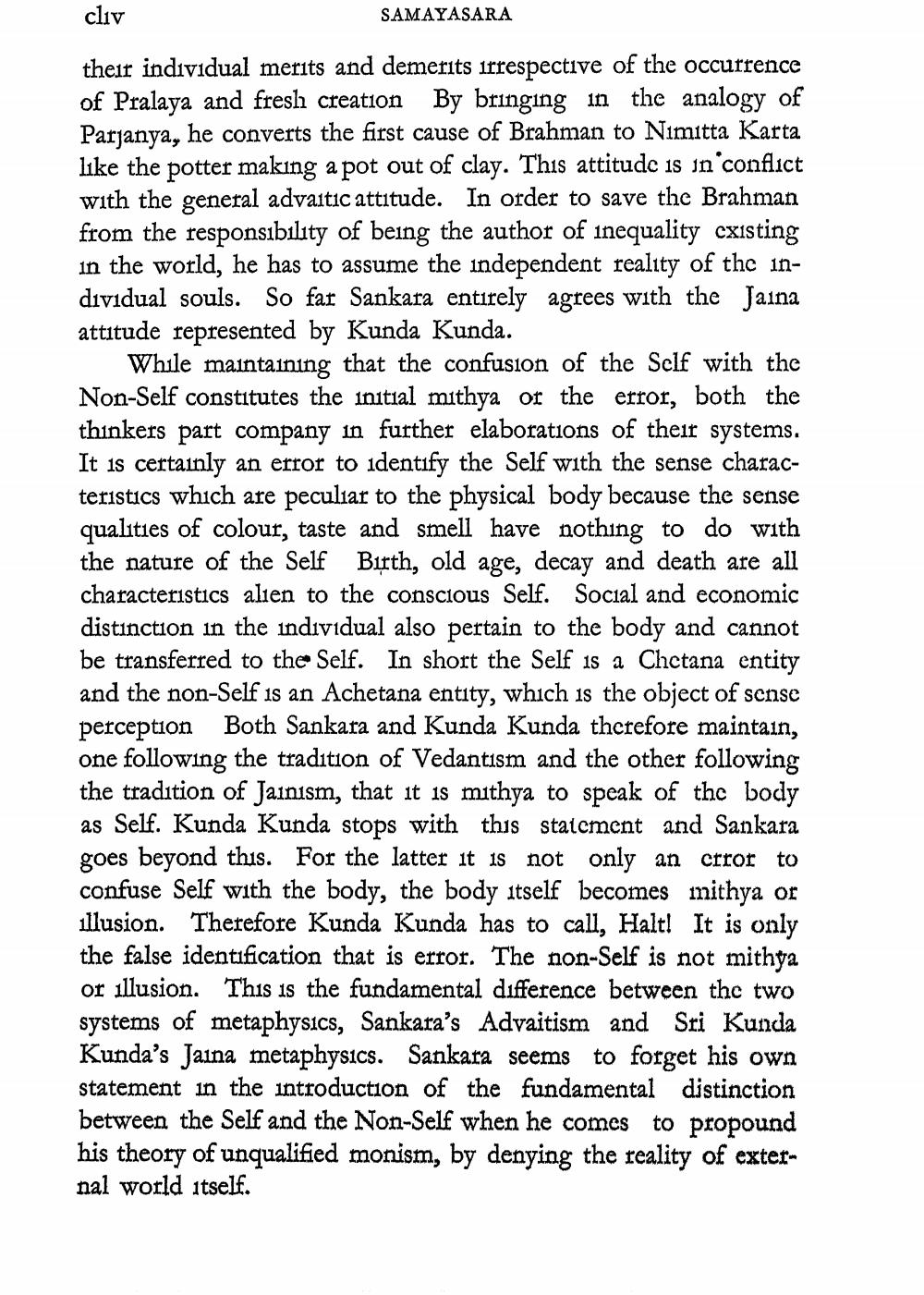________________
cliv
SAMAYASARA their individual merits and demerits irrespective of the occurrence of Pralaya and fresh creation By bringing in the analogy of Parjanya, he converts the first cause of Brahman to Nimitta Karta like the potter making a pot out of clay. This attitude is in conflict with the general advaitic attitude. In order to save the Brahman from the responsibility of being the author of inequality cxisting in the world, he has to assume the independent reality of the individual souls. So far Sankara entirely agrees with the Jaina attitude represented by Kunda Kunda.
While maintaining that the confusion of the Self with the Non-Self constitutes the initial mithya of the error, both the thinkers part company in further elaborations of their systems. It is certainly an error to identify the Self with the sense characteristics which are peculiar to the physical body because the sense qualities of colour, taste and smell have nothing to do with the nature of the Self Birth, old age, decay and death are all characteristics alien to the conscious Self. Social and economic distinction in the individual also pertain to the body and cannot be transferred to the Self. In short the Self is a Chctana entity and the non-Self is an Achetana entity, which is the object of sense perception Both Sankara and Kunda Kunda therefore maintain, one following the tradition of Vedantism and the other following the tradition of Jainism, that it is mithya to speak of the body as Self. Kunda Kunda stops with this statement and Sankara goes beyond this. For the latter it is not only an crror to confuse Self with the body, the body itself becomes mithya or illusion. Therefore Kunda Kunda has to call, Halt! It is only the false identification that is error. The non-Self is not mithya or illusion. This is the fundamental difference between the two systems of metaphysics, Sankara's Advaitism and Sri Kunda Kunda's Jaina metaphysics. Sankara seems to forget his own statement in the introduction of the fundamental distinction between the Self and the Non-Self when he comes to propound his theory of unqualified monism, by denying the reality of external world itself.




